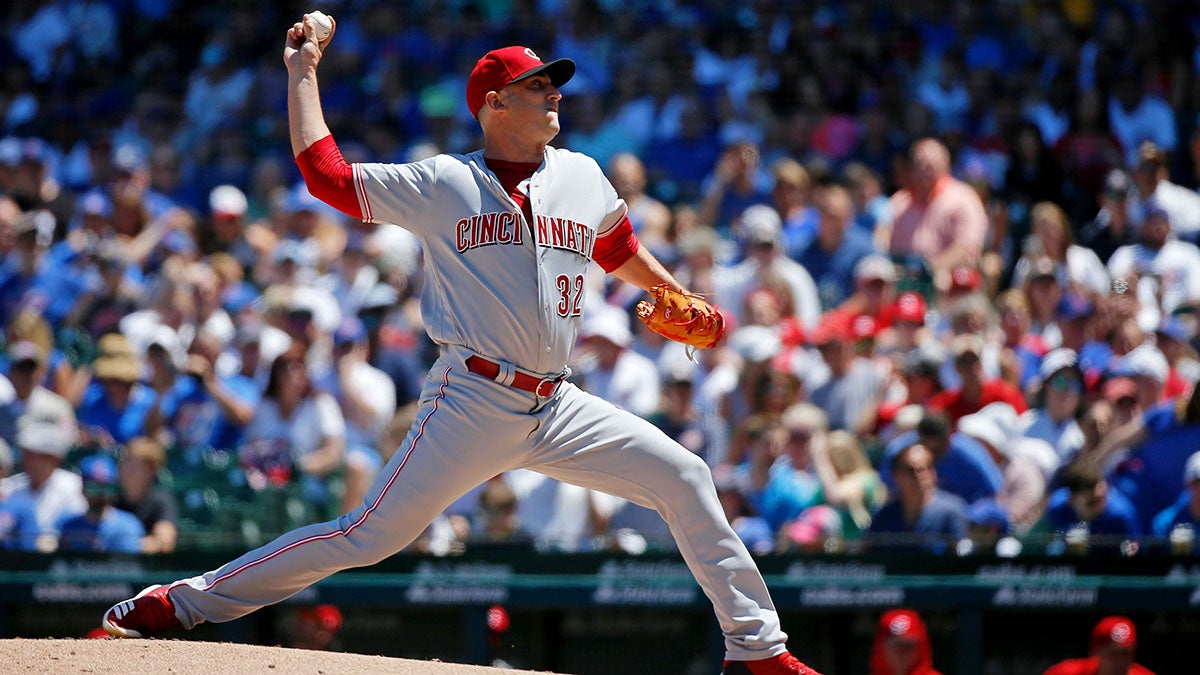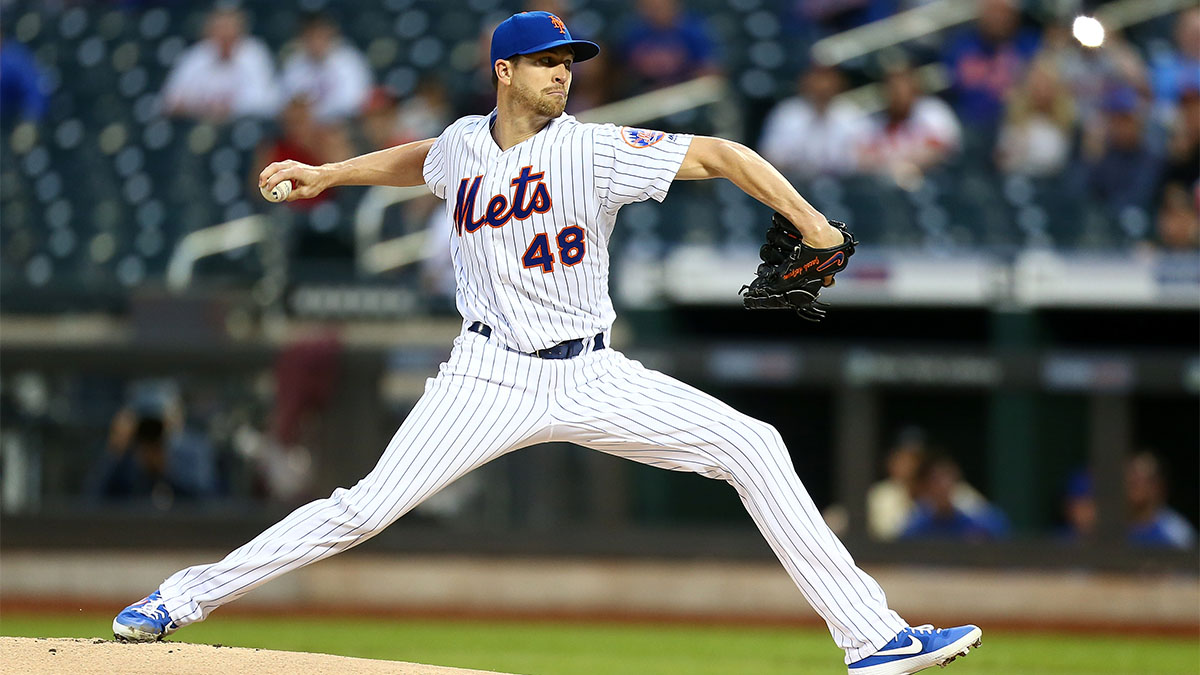Mixed results await pitchers after Tommy John surgery

Ulnar collateral ligament reconstruction — more popularly known as Tommy John surgery — has become prevalent in Major League Baseball over the past quarter century. Originally performed on Los Angeles Dodgers left-hander Tommy John in 1974, the procedure is often dreaded by fans and nerve-wracking for teams, both of which wonder if the pitcher will be negatively impacted by the operation.

The UCL is a thick, triangular ligament in the elbow joint, and it is put under stress with repeated overhead throwing motions. On occasion, this repetitive motion will create a partial or complete tear in the ligament. If the tear requires surgery, the player — a pitcher, in most instances — likely will miss an entire season for rehab and recovery.
Ultimately, several risk factors determine if a UCL will tear. One study found pitch velocity was not a direct risk factor for UCL damage, as is often thought. Rather, the stresses brought about by the number of high-velocity pitches thrown can do damage to the ligament and potentially lead to a tear. A 1 percent increase in fastball usage corresponded to a 2 percent increase in the need for possible UCL reconstruction.
“The Relationship Between Pitching Mechanics and Injury: A Review of Current Concepts”, a research paper published in 2017, stated that in a three-year study, motion analysis of 23 professional baseball pitchers showed a “significant relationship” between elbow injury and elbow valgus torque. This is the singular moment in which the elbow joint is subjected to compression and tension from a bending motion, such as when a baseball is delivered.
Another 2017 study published in the Journal of Shoulder and Elbow Surgery looked at how mechanics and pitch location changes following surgery. In addition to the number of high-velocity pitches and the degree of elbow tension, the way a pitcher throws can put added strain on the ligament.
Northwestern University Feinberg School of Medicine researchers analyzed subjects with an average age of 27.4 and an average “return to competition” time of 452 days. Using the pitch-tracking database PITCHF/x, the researchers found a pitcher’s release point and pitch movement, or “spin,” differed before and after surgery even though pitch selection did not. They further identified that curveball movement increased while fastball and slider movement decreased. The researchers concluded “it is possible that pitchers extend their elbows less after UCL reconstruction as a protective mechanism.”
In addition, the better a pitcher is, the more likely it is he will be asked to throw more innings. Fatigue can be a factor in UCL damage. Perhaps in response, MLB teams are relying less on starting pitching and more on relief pitching. In 2010, the league had 44 starting pitchers throw 200 innings or more. Only 12 starters reached that mark in 2018.
Post-surgery workload is further reflected by a 2017 study conducted by researchers in California and Michigan. This study opined “a pitcher should be continually evaluated by the medical team through a multifactorial approach personalized to each individual pitcher that evaluates relative fitness, strength, performance, a subjective and objective examination and complaints, as well as volume and stress of individual and cumulative performance.” The researchers found no serious link between pitch count or inning limits and a second UCL injury — a major concern for many who have undergone the procedure before.
Some pitchers and medical staffs want to avoid the year-long layoff associated with UCL reconstruction. New York Yankees starter Masahiro Tanaka suffered a slight ligament tear in 2014, but elected for rest and rehabilitation instead of surgery. He has been a steady pitcher since returning and posted a career-best 4.6 wins above replacement in 2016.
Researchers at the Hospital for Special Surgery in New York City wrote that MRI and ultrasound imagery greatly help determine a tear’s severity, and those with incomplete or partial tears may not need a procedure. This is a preferred path for adolescent athletes whose bodies are still developing.
As for physical therapy, one study cited by the researchers identified an 8-to-12 week period during which the athlete wears a brace or a splint until discomfort subsides, followed by a throwing program to rebuild elbow strength.
Finally, injections such as platelet-rich plasma have gained popularity in recent years. Essentially, PRP injections use portions of a patient’s own blood cells to accelerate recovery to an injured body part — such as the elbow ligament.
If symptoms recur or worsen following “an appropriate trial of nonoperative treatment,” surgery is the next option. A 2019 investigation led by five researchers at the Kerlan-Jobe Orthopedic Clinic in Los Angeles acknowledged player satisfaction was significant following the procedure, but relatively little had been disclosed regarding the types of tears operated on, in addition to the different surgical techniques used in repairing the elbow.
This study consisted of 46 MLB pitchers who underwent primary UCL reconstruction. Pitchers returned to action after about 13 months on average, and 82 percent of patients returned to the majors.
The surgeries compared were the docking and modified Jobe styles. Docking — the more popular option recently — gently splits rather than detaches the nearby muscles and keeps the ulnar nerve in place. Less drilling into the humerus reduces risks of a fracture in the future.
The modified Jobe is the older technique and is named after Dr. Frank Jobe, the physician who performed John’s surgery in 1974. It utilizes larger “tunnels” drilled into the humerus and ulna. These holes facilitate the graft — the transplant of living tissue into a new area of the body, which is secured to surrounding soft tissue to restabilize the elbow.
The researchers found the 28 pitchers who underwent the modified Jobe procedure added an average of four seasons to their careers and more than two additional seasons at the MLB level as opposed to the 17 pitchers who opted for the docking technique. Forty percent of the docking patients were still pitching at the time of the study.
Pitchers’ overall velocity stayed constant in both groups, and key metrics, such as earned run average and walks and hits per inning pitched, remained steady. The modified Jobe group issued more walks than the docking group, but had more success coming back to MLB — 89 percent of those operated on successfully returned as opposed to 71 percent of docking patients.
Researchers also found pitchers who threw harder were more susceptible to distal tears, which are farther away from the ligament. But these pitchers posted better statistics — a lower ERA and a higher WAR, for example — prior to the surgery and pitched more innings following the surgery. Pitchers with proximal tears closer to the ligament performed worse but showed some statistical improvement following the operation.

Those observations have been both affirmed and challenged by research. In a 2013 study conducted at Rush University Medical Center, doctors analyzed 179 pitchers and found 83 percent returned to MLB. Despite working fewer innings per season, on average, the pitchers had lower ERAs and WHIPs.
In 2014, Columbia University researchers reviewed 147 cases between 1974 and 2012. Eighty percent of those studied returned to MLB after surgery, but the researchers found pitchers had an increased likelihood of heading back to the injured list. They also found postoperative problems with “average pitches per innings, percentage of pitches thrown in the strike zone, innings pitched, and percentage fastballs thrown. In these respective categories, 62%, 83%, 69%, and 77% of players experienced declines postoperatively.”
These results have real-life applications. Tommy John himself was an early success story following his operation. John pitched until 1989 and recorded 164 of his 288 major league wins after surgery. He is one of the 30 winningest pitchers in MLB history.
New York Mets pitcher Jacob deGrom underwent Tommy John surgery as a prospect in 2010. deGrom reached the major leagues four years later and won the National League Rookie of the Year Award in 2014. One year after that, he helped the Mets earn the National League pennant. In 2016, he underwent another procedure to repair a damaged nerve in his right elbow. deGrom went on to win the National League Cy Young Award in 2018 in recognition of a dominant season that included a 1.70 ERA, 269 strikeouts and 9.0 WAR over 32 starts.
deGrom’s former teammate Matt Harvey is a more cautionary tale. Harvey debuted in 2012 as the Mets’ top pitching prospect. In 2013, his 6.9 WAR ranked second in baseball, and he posted a 0.93 WHIP across 178 ⅓ innings. That October, he had Tommy John surgery. Harvey’s first season back was successful — he won 13 games with a 2.71 ERA, a 1.02 WHIP and a strikeout per inning as the Mets reached the World Series. But his career has tailed off since: Harvey has pitched for four teams in the past four seasons and has not recorded an ERA lower than 4.86 in that span.
It is difficult to isolate one risk factor for a UCL injury, and studies seem somewhat divided on how successful pitchers are upon return from surgery. Nearly all studies agree that return rates are high, even though recovery is different for each pitcher. Continued statistical fine-tuning in addition to medical advancements could offer us a more predictable method for pitcher performance after Tommy John surgery.
Jeremy Beren is a senior sports journalism major at Arizona State University
Editor’s note: For the coming 2019-2020 academic year, the Global Sport Institute’s research theme will be “Sport and the body.” The Institute will conduct and fund research and host events that will explore a myriad of topics related to the body.
Related Articles
From MLB to youth sports, baseball sees increase arm injuries in pitchers
Thoracic outlet surgery becoming go-to move for ailing pitchers
Nature of the game: Is cheating just part of baseball's DNA?
How should officials decide when cutting-edge medical interventions for athletes cross the line?


